Birthday trip to Yunguan Shiku (caves)

To celebrate my birthday, I rented a car with a driver who took me to two monasteries (a very close friend apparently found it somewhat amusing that I would celebrate my birthday in monasteries, I am not sure why).
In the morning the Yunguan caves, a short distance from Datong, actually very close to the coal mine. They are a series of 53 man-made grottoes on the southern slopes of the Wuzhou Mountains which stretch over about 1 kilometer. They are enormously rich in Buddhist sculpture, 51,000 in fact, which - according to Baedeker - "betray Indian and Ancient Greek influences."
The largest sculpture is 17 meters tall, while the smallest is only two centimeters.
It all reminded me very much of the Ajanta caves in India, which I visited with my father in 1982. (Perhaps my father might want to scan a couple of pictures from that visit, so I can put them up here). But I think Yungang is richer in sculptures.
According to Weishu, or "The Northern Wei History" (an old history work), the Buddhist monk Tan Yao from Liangzhou persuaded the Northern Wei emperor Wen Cheng Di to begin to build this temple. "Five caves were excavated in the stone wall hewn out of the mountain ridge ... with one Buddha statue carved in each cave.... The carvings were of exceptional excellence and unparalleled throughout the world." The work began in 460.
I bought a beautiful coffetable book (all in Chinese) with pictures much more gorgeous than mine. Its historical introduction by Li Zhigou was translated by Zhang Jie and published in a separate booklet. This translation is excellent (unlike some that I give examples of below).





I believe this is Maitreya, whose right arm is supported by a four-armed warrior.
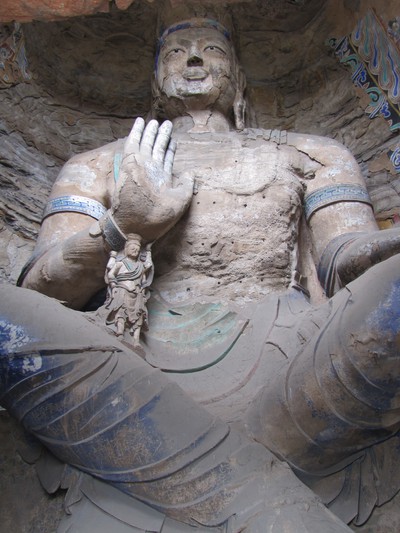
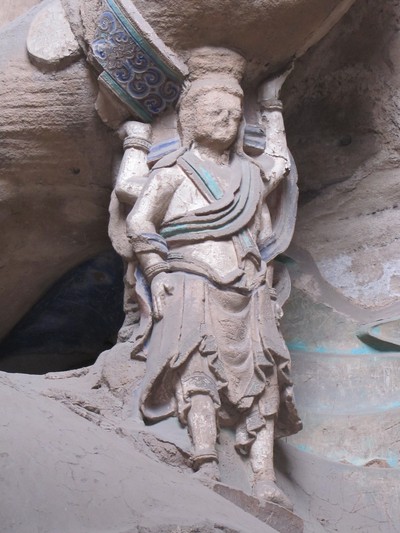

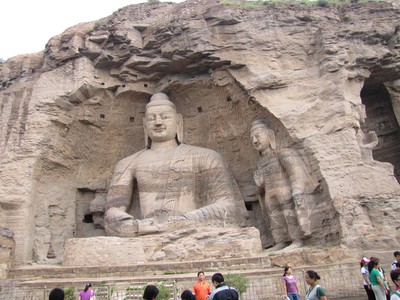
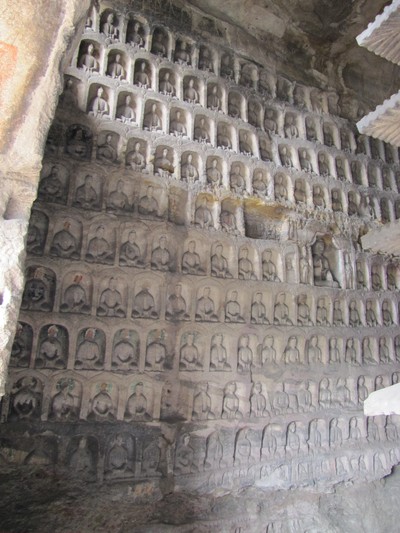
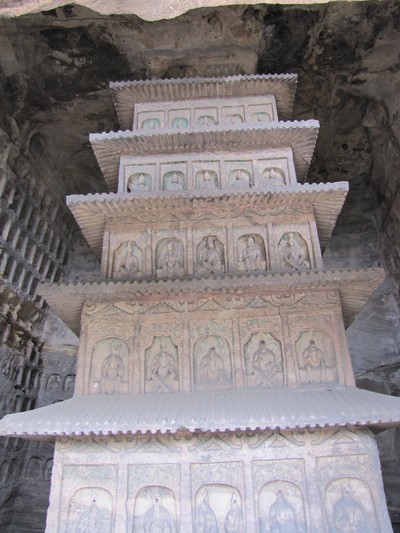
The caves have a website in English!
Kommentarer
Postat av: Eva Winroth
Kejsaren Wen måste vara en släktig, vi heter ju lika, eller hur?
Trackback
